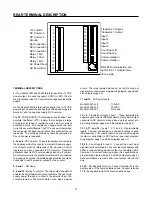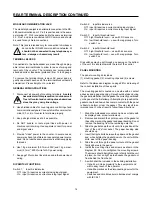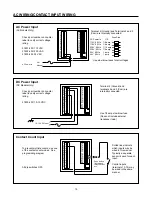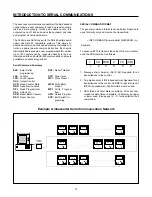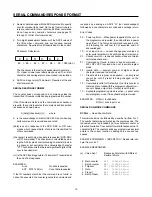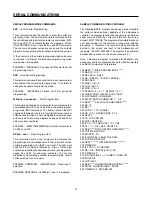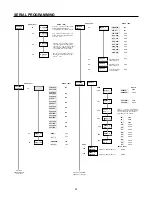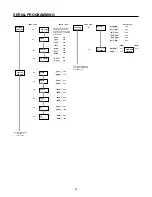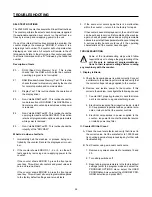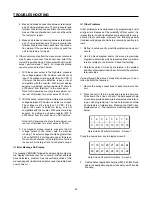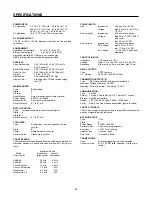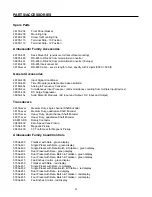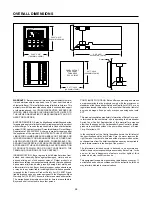
24
TROUBLESHOOTING
SELF-TEST ROUTINES
The 5760X-402 counter has several built in self-test routines.
The counter performs these tests each time power is applied.
If questionable operation ever occurs, run the self-test rou-
tines by removing and re-applying power to the unit.
If one of the internal test routines discovers a problem, the
counter displays the message “ERROR X” where X is a
single digit test number. The counter will not operate when
displaying an error code. All outputs will remain in the off
(dropped-out) state. In the error mode, the counter responds
to all serial commands with a “N” followed by the failed test
number.
Description of tests
#0 -
ROM (Read Only Memory) Test: This routine
checks that the ROM which holds the counter’s
operating program, is not corrupted.
#1 -
RAM (Random Access Memory) Test: This routine
checks the read / write memory used by the counter
for normal operation and communication.
#2 -
Display Test: This routine checks the operation of
the display driver.
#3 -
Non-Volatile RAM Test #1: This routine checks the
run data section of NOVRAM. This NOVRAM sec-
tion retains all count and preset values while power
is removed.
#4 -
Non-Volatile RAM Test #2: This routine checks the
user program section of the NOVRAM. This section
retains all programmable options and parameters
while power is removed.
#5 -
Non-Volatile RAM Test #3: This routine checks the
integrity of the "NOVRAM".
What to do when a test fails
1. Immediately halt the machine or process being con-
trolled by the counter. Record the displayed error num-
ber.
2. If the counter shows ERROR 0, 1, 2, or 5, run the self-
tests again by removing and re-applying power to the
counter.
If the counter shows ERROR 3, press the front panel
reset key. This will set all counters and preset values to
zero and rerun all tests.
If the counter shows ERROR 4, press the front panel
reset key. This will reset all user programmable options
to the factory default settings and rerun all tests.
3. If the same error occurs again there is a malfunction
within the counter — return it to the factory for repair.
If the counter does not display an error, the unit is OK and
can be put back in service. Before starting the machine
again, check all preset values and user programmable
options to insure that these parameters have not changed.
A serious safety hazard could result if the operating
characteristics of the counter have changed.
TROUBLESHOOTING
Some of the troubleshooting steps which follow
require the user to change the programming of the
unit. Be sure to restore all programmable op-
tions to their required settings before running
any machinery with the counter.
I. Display is Blank:
A. Check that incoming power is wired correctly. Connect
a voltmeter to the power input terminals and verify that
the correct voltage is being supplied to the counter.
B. Remove and restore power to the counter. If this
corrects the problem, investigate the following causes:
1. Counter NOT properly grounded - check that termi-
nal 4 is connected to a good electrical ground.
2. Electrical noise spike from inductive loads - install
R-C suppressors in parallel with any external sole-
noid or relay coils that the counter controls.
3. Electrical noise spikes in power supplied to the
counter - run power to counter from another source
or install a power line filter.
II. Counter Will Not Count:
A. Check the count scale factor and verify that it is set to
the correct value. Set the scale factor to 1.00000 and
try counting again before proceeding any further with
troubleshooting.
B. Test Counter using a manual count source.
1. Remove any wires connected to terminals 19 and
20.
2. Turn all dip switches off.
3. Reset all program parameters to the factory default
settings (enter the program mode and select the
PROGRAM OPTIONS menu, select the USER
PROGRAM sub-menu, select the LOAD DEF PRO-
GRAM selection and press ENT).




